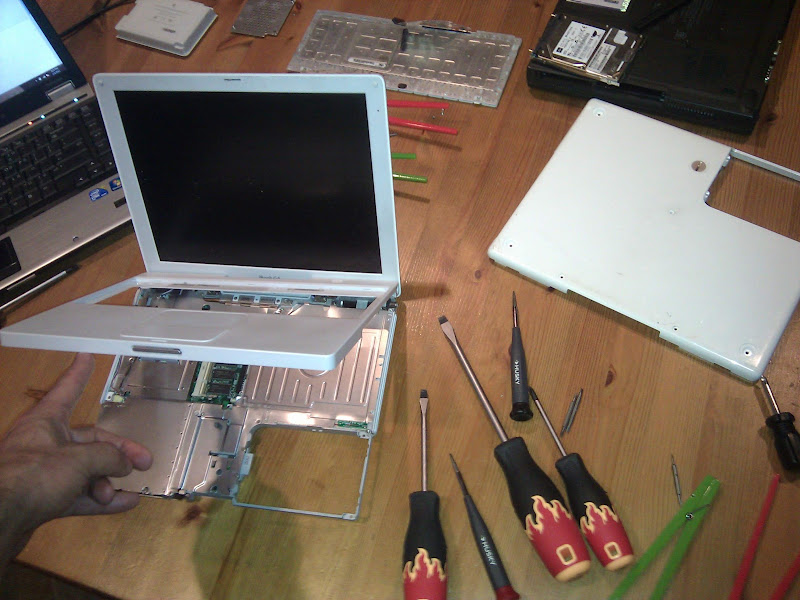It was in the mid-eighties when I
discovered that the activity I now call "design" had a name, and that
you could do it for a living.
Despite having spent almost 30 years involved in it one way or another, to this day I freeze for a moment when someone asks me "What do you do?"
Either this means I spent a long (long) time doing something I don't understand (and considering I made a decent living at it that would be remarkable in itself), or I don't trust in my ability to convey the nature of it in a few words. Instead I try to find an easier, faster, more acceptable way to handle the question and move on with the rest of our lives, secretly resenting the fact that I failed, once again.
Despite having spent almost 30 years involved in it one way or another, to this day I freeze for a moment when someone asks me "What do you do?"
Either this means I spent a long (long) time doing something I don't understand (and considering I made a decent living at it that would be remarkable in itself), or I don't trust in my ability to convey the nature of it in a few words. Instead I try to find an easier, faster, more acceptable way to handle the question and move on with the rest of our lives, secretly resenting the fact that I failed, once again.
The problem is that "Design" is a term open to a variety of interpretations, and everybody expects it to get more specific, or else they'll attach to it whatever preconceived notion they have about it.
"I'm a designer" means virtually nothing to most people, but saying for instance something like "I'm a graphic designer specialized in infographics" immediately clarifies what your role in society is: your counterpart can now picture you creating pretty graphs on a computer, wearing eccentric shoes that perfectly harmonize with your outfit, and the fixie you rode to work, and ... (add to the list of stereotypes here).
We can't help it. We function that way. We have to picture things to understand them, tell ourselves a story about what we see or hear.
All this however says very little about the profession, it describes the output (in this case infographics), and something about the appearance of the individual. The end. Beyond that point we're back in fuzzy-land, and what a designer really does is a mystery.
For most people the label "designer" is some substitute for "artist", but a bad one: one that on one hand is not good enough to play in the big leagues ("true" art), and on the other hand is too much of a coward to die trying through a tormented bohemian (but “oh so romantic”) existence.
The truth is that, although there is “art” in design, there are a multitude of other characters that need to be factored in, which depending on the specific design task can include system thinking, customer empathy, storytelling, business constraints, manufacturability, building code requirements and so on and so forth.
The image of the whimsical, clueless but creative professional starts to fade, leaving in its place an individual that balances requirements of many different kinds, coming from several directions, and explores and iterates to find a solution that can harmonize them.
Granted, some design activities lend themselves more to the expressive aspect of design (fashion design is one that comes to mind), while others are more grounded in hard constraints and functional solutions (i.e. designing medical devices).
I like to think that this sliding scale merely changes the balance of priorities: a fashion designer still needs to know how garments are made, and what makes sense for the business, and who is the target customer he/she is designing for; likewise the designer of medical devices still needs to know how we perceive shapes and colors, to try and combine them into a solution that works better, whether it means easier operation for a nurse or a more welcoming sensory experience for the patient.
This is probably why often designers, particularly in Europe, resist a definition: they resent being painted in a corner by a descriptor that hides the complexity of their work, that focuses on the output alone, knowing that what they do can be applied in so many different ways.
And it has been: over the years we've seen designers adapt to all sorts of projects; the same professional that once designed your letterhead has now revamped the user interface of the latest app you installed, created the bag that you keep your iPad in, and redesigned the customer flow in the sandwich shop where you're grabbing lunch.
Dave Kelley, founder of IDEO, tries to explain how this is possible in the infamous "shopping cart video", when he says "we're not expert at any given area, we're experts in the process...". However I prefer to use the word 'Journey' over ‘process’, which to me sounds too repetitive and immutable, while design is always a bit different.
In all this mess, of different
specializations, activities, and outputs, what is the common thread? How can
designers apply their craft across all this?
There has to be something, common to the different design disciplines, that explains this phenomenon without needing to focus on either the output or the specific operations performed, something that can capture the essence of what 'design' is.
There has to be something, common to the different design disciplines, that explains this phenomenon without needing to focus on either the output or the specific operations performed, something that can capture the essence of what 'design' is.
I should not attempt this. After all I said designers resist definitions. Definitions kill ambiguity and ambiguity is where creations take form. However design has been a hot topic in business for a number of years now and after having read countless definitions and explanations (often by people that have no direct experience of it), I feel like I'm allowed to give my interpretation, one rooted in many years in the trenches of a rapidly evolving profession.
Designers connect the dots to get to a
coherent picture
I believe designers seek harmony: they gather information from different disciplines, from end users, from business leaders, from current cultural or social trends, they speak the different languages needed to collect this info, and they work with experts in different fields to deliver something of value that harmonizes the different parts.
We create connections, links, synergies, between products and people, between corporations and society, between vision and reality.
That's why I like to say that design is the connective tissue.
I believe designers seek harmony: they gather information from different disciplines, from end users, from business leaders, from current cultural or social trends, they speak the different languages needed to collect this info, and they work with experts in different fields to deliver something of value that harmonizes the different parts.
We create connections, links, synergies, between products and people, between corporations and society, between vision and reality.
That's why I like to say that design is the connective tissue.
Of course this is just my point of view but
I would love to hear yours too, my main goal in writing this is to start a
conversation.
Thanks for taking the time to read this.







